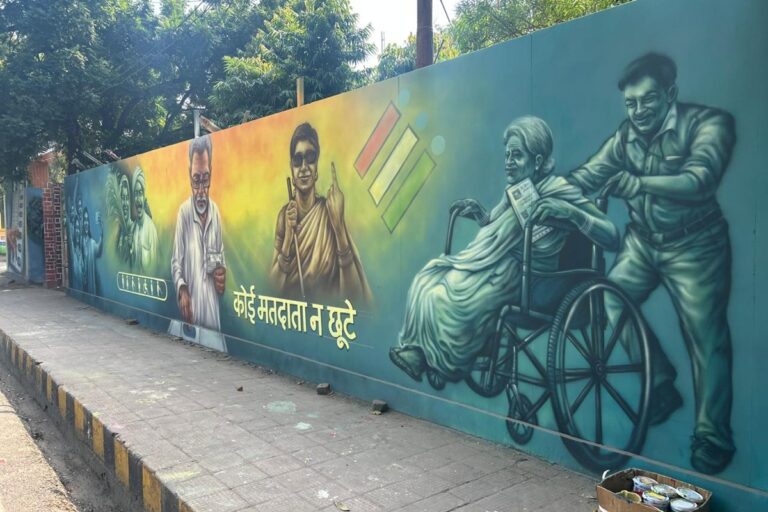- Environmental justice scholar Arpitha Kodiveri’s book “Governing Forests” critically examines India’s forest laws to show how the state uses them to deny the rights of forest-dwelling communities over their land and forest resources, by linking a law to an area and community.
- The book builds on years of Kodiveri’s fieldwork and research in Uttar Pradesh, Rajasthan, Gujarat, Odisha, and Karnataka with forest-dwelling communities, featuring interviews with activists and members of Adivasi and Dalit communities.
- The eight-chapter volume is an engaging masterclass in forest governance and its socio-political turbulence, exploring questions and solutions for people who closely follow how forests are administered in India.
Unless you’re a scholar or an expert in forest governance in India, it is hard to understand how forest laws work and whether they effectively protect forests and those who have lived in them for generations. Arpitha Kodiveri’s recently published book Governing Forests: State, Law, and Citizenship in India’s Forests (Melbourne University Publishing, 2024, soon to be published by Yoda Press in India) makes an attempt to answer this question and many more.
Kodiveri, an environmental law and justice scholar and an assistant professor of political science at Vassar College in the U.S., used to work as an environmental lawyer in India. Her book builds on years of fieldwork and research in Uttar Pradesh, Rajasthan, Gujarat, Odisha, and Karnataka with forest-dwelling communities, featuring interviews with activists and members of Adivasi and Dalit communities. Kodiveri describes what she has learned from working with forest-dwelling communities such as the Gujjars and Bawariyas in Sariska Tiger Reserve in Rajasthan, Soligas in Biligiriranga Hills in Karnataka, and Dongria Kondhs in Niyamgiri Hills in Odisha, among others.

Addressing key questions of control
The book sets out to answer three questions: how have existing environmental laws shaped forest governance in a way that allows the state to exercise absolute control over forests? How can the relationship between state and forest-dwelling communities, which has always been tense, be repaired? What kind of forest governance and laws does India need to repair the ruptures between these two as the climate crisis worsens? Through her lucid prose filled with anecdotes and conversations from the ground, Kodiveri answers the above questions.
The book covers a lot of ground in its eight chapters – environmental laws and governance in India, the current model of forest conservation that tends to be exclusionary, the exclusion of Dalits from India’s forest laws, and how forest-dwelling communities are using the law to find creative solutions for protecting forests in the face of climate change.
The book is written and structured so that even readers new to law, political science, and environmental studies can easily understand its concepts. However, people who closely follow how forests are administered in India – activists, students, academics, policymakers, researchers, lawyers, and journalists – will find it particularly interesting because of the solutions that the book proposes. As the chapters progress, the book’s language can feel repetitive, but the author makes up for it with neatly laid out information, ideas that flow into one another, and voices from the ground, ranging from activists to bureaucrats to mining company officials.

Kodiveri explains the history of forest governance in India by taking the reader through key moments that have shaped forest laws in India, starting all the way from the creation of the Indian Forest Act of 1865 during the colonial era, bringing the reader up to speed with forest policy, laws, and court judgments over the years, mentioning resistance movements such as Pathalgadi and analysing amendments to forest laws made in present-day India.
Although the book is not a primer on forest laws in India, it succinctly describes many forest laws, such as the Coal Bearing Areas Act 1957, Forest Conservation Act 1980, Wildlife Protection Act (WLPA) 1972, etc. It also critically examines these laws to show how the state uses them to deny the rights of forest-dwelling communities over their land and forest resources such as fish, timber, and honey. The book does this by linking a law to an area and community in India, which draws the reader in while providing context. It also briefly describes the creation of Scheduled Areas, which are largely inhabited by the Scheduled Tribes, and the Fifth Schedule of the Indian Constitution, which covers the administration of Scheduled areas in ten states in India.
Reading this book felt like taking an engaging political science class, where one learns the concepts of state and citizenship in relation to the existing forest governance model in India. Kodiveri shows us how the state operates and how citizenship is practiced in India’s forests. For instance, a state can be absent or extractive, and citizenship can become a claims-making practice where forest dwellers engage with the judiciary and local governance bodies to claim their forest rights.
Read more: Unravelling forest conservation
Exploring who is in and who is out in forests
One of the most significant aspects of the book is its take on exclusionary conservation that threatens communities with relocation in forests such as the Sariska Tiger Reserve. The exclusionary approach to conservation also played a role in the Supreme Court’s 2019 order to evict a million forest dwellers and how denotified tribes such as Bawariyas face criminal charges when they practice their forest rights. The book touches upon the possibility of “healing of historical antagonisms” between conservationists and forest dwellers, which, in turn, could check the fast expansion of extractive industries such as mining when both unite in resistance.
Amongst all the laws, the Forest Rights Act 2006 occupies most space in this book, given its objective in righting the historical injustices faced by forest-dwelling communities. The most striking part of the book is a chapter on the need for forest law to address the question of caste discrimination and privilege, which speaks about the exclusion of Dalits from forests and forest governance despite them residing in forests for generations. A common perception is that it is the Scheduled Tribes who live in forests. However, there are other traditional forest dwellers (OTFDs), as described in the FRA, including Dalits, who have also participated in struggles against extractive industries. The book presents accounts of how Dalits face untouchability by Adivasis/STs in forests and stresses the need to rethink the law and rectify it to achieve environmental and social justice. The current forest laws do not include specific provisions or safeguards for Dalit forest dwellers. However, Kodiveri cites an inspiring example of Dudhi in Uttar Pradesh, where Adivasi and Dalit residents of a forest jointly applied for their Community Forest Rights title under the FRA.
A stewardship selective and divisive
Governing Forests also reveals how the state steps back in its role of ensuring the welfare of forest-dwelling communities and how companies take advantage of the state’s absenteeism to get the consent of communities to clear forests. It reveals companies’ manipulative methods to get communities to comply – by employing dalals or brokers who embed themselves in the community. Kodiveri speaks to a dalal who talks about distributing cold packaged drinks to school children on hot days and attending weddings and funerals in the village to gain the community’s trust. She also interviewed a PR professional who admitted to consciously creating community divisions based on identity and ideology to get people to agree to sell their land to mining companies. With the example of Sundergarh in Odisha, she shows how a company makes promises to do what the state should have done – build roads, establish schools, and provide jobs. After land acquisition, it conveniently abandons these promises, leaving communities distraught.

The book also travels through the last decade of Narendra Modi’s prime ministership in India and the BJP government’s role in weakening and diluting environmental laws by introducing amendments and making the legislative process non-participatory. Kodiveri cites the example of the Forest Conservation Act 1980, where amendments were proposed in 2021 and passed in 2023 to fast-track forest clearances. Through examples, she proves how the state favours extractive businesses like coal mining instead of protecting the jungles that stand over coal and other mineral deposits. Through granular detail, she captures how, even after attempts to introduce participatory processes, amendments, and reforms, the state remains the most powerful, often doing a disservice to the communities that rely heavily on the forests.
Towards the end, the book provides concrete examples of communities such as the Dongria Kondh in Odisha and the Soliga community in Karnataka that have successfully managed to protect their natural resources by using a combination of existing laws and procedures, such as FRA, assessment by independent committees, and refusing consent through the gram sabha, to claim their forest rights and push back.
The book also asks important questions that will become urgent and pressing in the years to come because of climate change. Can the state evict forest dwellers in the guise of saving forests as carbon sinks? What are the risks of afforestation, implemented as a climate solution, on forest-dwelling communities? And most importantly, who owns forests and is the real steward of forests? Kodiveri chooses to close the book with its most thought-provoking idea by describing how forest-dwelling communities are creatively interpreting environmental law in the hope of healing their fractured relationship with the state.
Read more: More than 15 years on, implementation of Forest Right Act is lagging
Banner image: The book is an engaging masterclass in forest governance and its socio-political turbulence. Image by Kalyan Varma.













